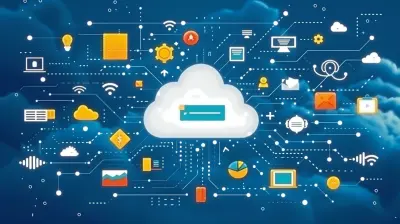How to Use Coding to Teach Problem-Solving Skills"
31 October 2025
In today's digital world, coding is no longer just for tech geeks or computer scientists—it's a fundamental skill that can benefit everyone. But beyond just writing code, learning to program helps develop critical thinking, creativity, and, most importantly, problem-solving skills.
Think about it—when you write code, you're constantly identifying problems, breaking them down into smaller steps, and figuring out the best way to solve them. This process mirrors real-world problem-solving, making coding an incredible tool for teaching kids—and even adults—how to think logically and systematically.
So, how exactly can coding be used to teach problem-solving skills? Let’s break it down step by step.

Why Problem-Solving Skills Matter
Before we dive into coding, let's talk about why problem-solving skills are so crucial.1. They’re essential for everyday life – Whether you're figuring out the fastest route to work or resolving a conflict, problem-solving is everywhere.
2. They improve logical thinking – Problem-solving hones our ability to reason, analyze, and make better decisions.
3. They build confidence – When students solve problems independently, they feel more competent and capable of tackling challenges.
4. They’re highly valued by employers – Companies are always looking for people who can think critically and come up with creative solutions.
The good news? Coding naturally cultivates all these skills.

How Coding Develops Problem-Solving Skills
1. Breaking Down Problems (Decomposition)
One of the biggest challenges in problem-solving is figuring out where to start. Coding teaches students to break down complex problems into smaller, more manageable parts—a technique known as decomposition.For example, if a student is coding a simple game, they need to think about:
- How will the player move?
- How will scoring work?
- How will the game detect when it’s over?
By breaking it down, the problem becomes less intimidating. This method applies to real-world problems too—whether it’s organizing a big project or fixing a broken device.
2. Thinking Step-by-Step (Algorithmic Thinking)
Coding requires writing step-by-step instructions that a computer can understand—this is called algorithmic thinking.Imagine you’re writing an algorithm for making a peanut butter and jelly sandwich. You wouldn’t just say “make a sandwich.” You’d need to specify:
1. Take out two slices of bread.
2. Spread peanut butter on one slice.
3. Spread jelly on the other.
4. Put them together.
This structured way of thinking helps students approach problems in a logical and organized way.
3. Recognizing Patterns (Pattern Recognition)
Programming often involves identifying patterns and reusing solutions—this is a key part of computational thinking.For instance, if a student sees that loops in coding help automate repetitive tasks, they might recognize similar patterns in real life—like in math equations or daily routines. Learning to see patterns makes problem-solving quicker and more efficient.
4. Debugging and Persistence
Let’s be real—coding comes with a lot of errors (a.k.a bugs). But that’s a good thing! Debugging teaches students that failure is just a step towards improvement.When students fix bugs in their programs, they learn to:
- Identify mistakes.
- Test different solutions.
- Keep trying until they find the right fix.
This persistence is key in real-life problem-solving. Imagine if students applied the same mindset to studying, sports, or even personal challenges. The ability to stick with a problem until it’s solved is a game-changer.
5. Creativity in Problem-Solving
Coding isn't just about rigid logic—it also encourages creativity. If a student is building a game or designing a website, they have to think creatively to make it engaging and functional.This ability to think outside the box translates directly to problem-solving. Whether it's finding a workaround for a difficult math problem or brainstorming ideas for a project, creativity helps students explore multiple solutions rather than getting stuck on one idea.

Best Coding Exercises to Build Problem-Solving Skills
Now that we know how coding fosters problem-solving, let's look at some fun ways students can practice these skills.1. Coding Puzzles and Challenges
Platforms like Scratch, Code.org, and Codecademy offer coding puzzles that gradually increase in difficulty, forcing students to think logically and systematically.2. Building a Simple Game
Ask students to create a simple game, like a maze or memory game. They’ll have to think about mechanics, rules, and how to handle unexpected bugs.3. Debugging Exercises
Give students a piece of broken code and ask them to fix it. This helps them develop patience, analytical thinking, and a detail-oriented mindset—all key problem-solving skills.4. Algorithm Design Challenges
Challenge students to write an algorithm for real-world tasks, like planning a daily schedule or organizing a bookshelf in the most efficient way.5. Collaborative Coding Projects
Encouraging teamwork in coding projects helps students learn how to communicate their thought processes, brainstorm solutions, and problem-solve collectively.
Tips for Teaching Coding as a Problem-Solving Tool
If you're a teacher or parent helping a student learn coding, here are some tips to make problem-solving a key focus:- Encourage a growth mindset – Remind students that mistakes are part of learning and every bug they fix makes them better problem-solvers.
- Ask questions instead of giving answers – Instead of solving issues for them, ask, “What do you think is causing the bug?” or “What happens if you change this line of code?”
- Make it hands-on and interactive – Use visual coding tools like Scratch for younger students and Python or JavaScript for older ones.
- Relate coding to real life – Show students how problem-solving in programming applies to daily challenges, from organizing groceries efficiently to planning a trip.
- Encourage experimentation – Let students tweak their code to see how small changes impact the outcome. This trial-and-error approach builds resilience and analytical skills.
The Bigger Picture: Beyond Just Coding
While coding is a fantastic tool for developing problem-solving skills, the real magic happens when students transfer these skills to other areas like math, science, and even everyday challenges.Think about it—when students learn to break down coding problems, recognize patterns, and persist through challenges, they build a mindset that helps them tackle problems in all aspects of life. Whether they're solving a tricky math equation, troubleshooting a science experiment, or even resolving a personal conflict, the problem-solving habits learned through coding carry over in powerful ways.
Final Thoughts
Coding isn't just about writing lines of code—it's about training the brain to solve problems efficiently and logically. By teaching students to break down problems, think step-by-step, recognize patterns, debug errors, and embrace creativity, coding becomes one of the best tools for developing lifelong problem-solving skills.Whether you're a teacher, a parent, or a student, integrating coding into learning can build confidence, improve logical thinking, and create a problem-solving mindset that lasts a lifetime.
So why not start coding today? Who knows—you might just be creating the next great problem-solver of the future!
all images in this post were generated using AI tools
Category:
Classroom TechnologyAuthor:

Olivia Lewis
Discussion
rate this article
1 comments
Kason Shaffer
This article beautifully highlights the powerful connection between coding and problem-solving skills. By integrating coding into teaching, we empower students to think critically and creatively. It’s inspiring to see how these skills can foster resilience and adaptability in young learners. Thank you for sharing such valuable insights on this important topic!
November 5, 2025 at 1:51 PM

Olivia Lewis
Thank you for your kind words! I'm glad you found the connection between coding and problem-solving inspiring. Empowering students with these skills is truly essential!


